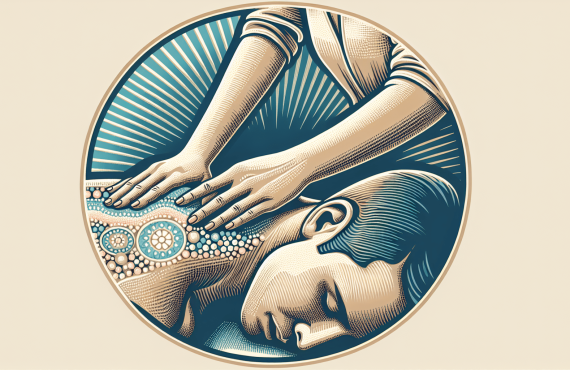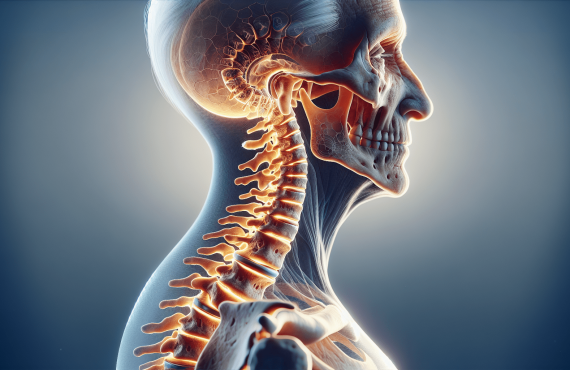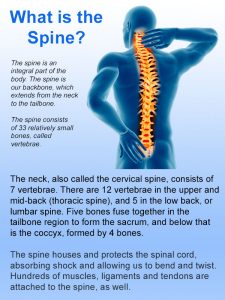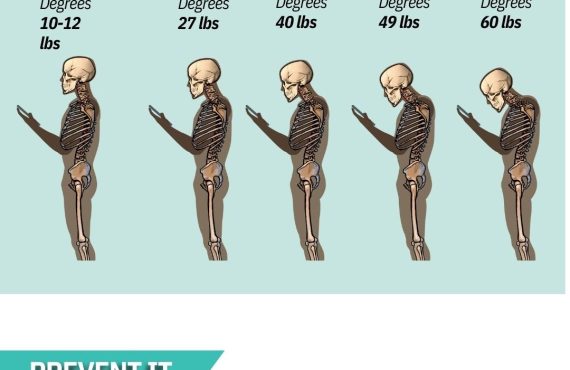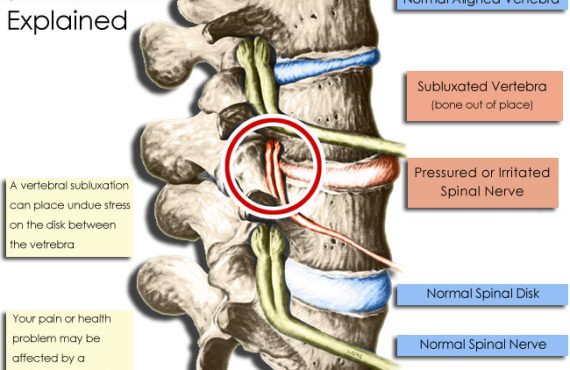If you’re looking to improve your posture and overall well-being, henry Chiropractic in Pensacola, FL is here to help. Owned and operated by Dr. Craig Henry, a licensed chiropractor, they are dedicated to using chiropractic care to enhance the health and wellness of their patients. Whether you’re experiencing back or neck pain, or simply want to start each day feeling better, Dr. Henry and his team are here to support you. Alongside Dr. Henry, you’ll also find Dr. Aaron Hixon, another dedicated chiropractor known for his passion for helping others. Together, they offer a range of chiropractic techniques to aid in improving posture and providing holistic care. So if you’re ready to take the first step towards better posture and a healthier you, reach out to Henry Chiropractic today.
Table of Contents
The Importance of Good Posture
Having good posture is essential for maintaining optimal health and wellness. It not only affects the way you look and feel but also plays a significant role in your overall well-being. Poor posture can lead to various health issues, while good posture can bring many benefits to your life. In this article, we will explore the effect of poor posture on health and the benefits of maintaining good posture.
Effect of Poor Posture on Health
Poor posture can have detrimental effects on your health. The misalignment of the spine due to poor posture can place unnecessary stress and strain on different parts of the body. This can lead to muscle imbalances, joint dysfunction, and chronic pain. Furthermore, poor posture can negatively impact your respiratory system, digestion, and even your mood. It can also contribute to the development of conditions such as headaches, fatigue, and poor circulation. Therefore, it is crucial to address and correct poor posture to prevent these health problems.
The Benefits of Good Posture
Maintaining good posture brings numerous benefits to both your physical and mental well-being. Good posture helps to align your spine properly, allowing the body to function optimally. It helps to alleviate muscle tension, reduce the risk of joint pain, and promote healthy blood circulation. Furthermore, good posture can improve your balance and coordination, enhancing your athletic performance. It also supports proper breathing and lung function, ensuring an adequate oxygen supply to your body. Additionally, good posture can boost your confidence, enhance your appearance, and contribute to a positive self-image. Therefore, practicing good posture is vital for overall health and well-being.
Chiropractic Care and Posture
Chiropractic care focuses on the relationship between the spine and the nervous system, recognizing the importance of proper posture for health. Chiropractors are trained professionals who specialize in the diagnosis, treatment, and prevention of musculoskeletal disorders, including postural issues. They use a holistic approach to address the underlying cause of poor posture and offer effective solutions to improve and maintain proper alignment.
Understanding the Relationship Between Chiropractic Care and Posture
Chiropractic care and posture are closely interconnected. Chiropractors understand that a healthy spine is essential for maintaining good posture. They evaluate the alignment of your spine and identify any imbalances or misalignments that may be contributing to poor posture. Chiropractors also assess other factors that can affect posture, such as muscle imbalances, joint restrictions, and lifestyle habits. By understanding this relationship, chiropractors can develop personalized treatment plans to address postural issues effectively.
How Chiropractic Adjustments Can Improve Posture
Chiropractic adjustments, also known as spinal manipulations, are a cornerstone of chiropractic care for improving posture. These manual techniques involve applying controlled force to specific areas of the spine to correct misalignments and restore proper spinal alignment. By realigning the spine, chiropractic adjustments help to relieve pressure on nerves, reduce muscle tension, and promote optimal posture. Chiropractors may also use other techniques, such as mobilizations, soft tissue therapies, and corrective exercises, to complement the adjustments and further enhance posture improvement.
Common Postural Issues
Many people suffer from common postural issues that can affect their health and well-being. These issues include forward head posture, kyphosis, lordosis, and scoliosis. Understanding these postural problems is essential in order to address and correct them effectively.
Forward Head Posture
Forward head posture, also known as “text neck,” is a common postural issue caused by excessive forward positioning of the head. It often occurs due to prolonged activities that involve looking down, such as using electronic devices or poor ergonomics. Forward head posture can lead to muscle imbalances, strain on the neck and upper back, headaches, and decreased lung capacity. Chiropractic care can help correct this postural issue through adjustments, exercises, and ergonomic recommendations.
Kyphosis
Kyphosis refers to an excessive outward curvature of the upper back, commonly known as “hunchback.” It can be caused by poor posture, osteoporosis, muscle imbalances, or other medical conditions. Kyphosis can lead to chronic pain, breathing difficulties, and an increased risk of fractures. Chiropractic care can help improve kyphosis through spinal adjustments, strengthening exercises, and postural retraining.
Lordosis
Lordosis is an excessive inward curvature of the lower back, often referred to as “swayback.” It can be caused by factors such as poor posture, obesity, pregnancy, or muscle imbalances. Lordosis can lead to lower back pain, muscle imbalances, and difficulties with movement. Chiropractic care can play a crucial role in correcting lordosis through spinal adjustments, corrective exercises, and postural education.
Scoliosis
Scoliosis is a sideward curvature of the spine, typically in an “S” or “C” shape. It can be either structural (caused by abnormal spinal development) or functional (resulting from muscle imbalances or postural issues). Scoliosis can cause back pain, postural asymmetry, and limitations in physical activities. Chiropractic care can help manage scoliosis by incorporating spinal adjustments, therapeutic exercises, and other specialized techniques tailored to each individual’s needs.
Chiropractic Techniques to Improve Posture
Chiropractors use a variety of techniques to improve posture and restore proper spinal alignment. These techniques are individualized to address specific postural issues and contribute to overall health and well-being.
Spinal Adjustments
Spinal adjustments are a cornerstone of chiropractic care for posture improvement. By applying controlled force to specific areas of the spine, chiropractors can correct misalignments and restore proper vertebral alignment. Spinal adjustments help to alleviate joint restrictions, reduce muscle tension, and promote optimal nervous system functioning. Regular spinal adjustments can not only improve posture but also enhance overall body function and well-being.
Therapeutic Exercises
Chiropractors often prescribe therapeutic exercises to complement spinal adjustments and address muscle imbalances contributing to poor posture. These exercises focus on strengthening weak muscles, stretching tight muscles, and improving flexibility and range of motion. By incorporating targeted exercises into a personalized treatment plan, chiropractors can help patients improve their posture and maintain a balanced musculoskeletal system.
Ergonomic Recommendations
Chiropractors also provide ergonomic recommendations to address postural issues caused by poor workplace ergonomics. They assess factors such as chair and desk height, monitor position, and body mechanics to ensure proper alignment and reduce the risk of postural strain. By incorporating ergonomic principles into daily activities, individuals can maintain good posture and prevent postural issues from arising or worsening.
The Role of Chiropractic Care in Pain Relief
Chiropractic care plays a significant role in relieving pain associated with poor posture. The misalignments and muscle imbalances caused by poor posture can create chronic pain and discomfort throughout the body. Chiropractors specialize in identifying and addressing the underlying cause of pain, rather than simply masking the symptoms.
How Chiropractic Care Can Alleviate Pain Associated with Poor Posture
Chiropractors use a holistic approach to alleviate pain associated with poor posture. By correcting spinal misalignments and addressing muscle imbalances, chiropractic adjustments can relieve pressure on nerves, reduce inflammation, and promote proper joint function. This can lead to a significant reduction in pain and discomfort caused by poor posture. Chiropractic care may also include other modalities such as soft tissue therapies, rehabilitation exercises, and lifestyle recommendations to support pain relief and long-term postural improvements.
Evidence-Based Studies on Chiropractic Care for Posture-Related Pain Relief
Numerous studies have supported the effectiveness of chiropractic care in relieving pain associated with poor posture. A systematic review published in the Journal of Manipulative and Physiological Therapeutics found that chiropractic interventions, including spinal adjustments, were effective in reducing pain and disability associated with musculoskeletal conditions, including those related to poor posture. Another study, published in the Annals of Vertebral Subluxation Research, demonstrated the positive effects of chiropractic care on pain reduction and postural improvements in individuals with forward head posture. These studies, among others, provide scientific evidence on the efficacy of chiropractic care for pain relief and postural correction.
The Long-Term Effects of Chiropractic Care on Posture
Chiropractic care is not just about short-term pain relief; it also aims to produce long-term postural improvements. By addressing the underlying cause of poor posture and providing personalized treatment plans, chiropractors can help individuals achieve and sustain good posture over time.
Maintenance Care for Sustaining Good Posture
Maintenance care is an essential aspect of chiropractic care for sustaining good posture. After the initial treatment phase, chiropractors recommend periodic check-ups and adjustments to ensure that the spine remains properly aligned and postural improvements are maintained. Maintenance care helps to prevent the recurrence of postural issues and allows individuals to enjoy the long-term benefits of good posture.
Preventing Future Postural Issues with Regular Chiropractic Visits
Regular chiropractic visits can help prevent future postural issues from developing or worsening. By addressing any emerging imbalances or misalignments early on, chiropractors can provide proactive care to maintain optimal posture and prevent potential health problems. Regular check-ups also allow chiropractors to provide ongoing postural education, lifestyle recommendations, and exercises to support long-term postural health.
Additional Benefits of Chiropractic Care for Posture
In addition to pain relief and postural improvements, chiropractic care offers additional benefits that can enhance overall well-being and quality of life.
Improved Balance and Coordination
Maintaining good posture through chiropractic care can improve balance and coordination. When the spine is properly aligned, the body’s center of gravity is optimized, allowing for better stability and control of movements. This can benefit individuals of all ages, from athletes looking to enhance their performance to seniors aiming to prevent falls and injuries.
Enhanced Athletic Performance
Athletes can benefit greatly from chiropractic care to improve their posture and overall body function. Proper spinal alignment and muscle balance can enhance athletic performance by improving range of motion, muscle strength, and coordination. Chiropractors often work with athletes to optimize their biomechanics, prevent injuries, and promote optimal physical performance.
Better Breathing and Lung Function
Good posture is vital for proper breathing and optimal lung function. When the spine is aligned correctly, the lungs have more room to expand, allowing for improved oxygen intake and carbon dioxide elimination. Chiropractic care can help individuals achieve and maintain good posture, resulting in better respiratory function and overall vitality.
Finding a Chiropractor
When looking for a chiropractor to address your posture issues, it is essential to research and select a qualified professional who suits your specific needs.
Researching and Selecting a Chiropractor
Take the time to research and select a chiropractor who has the appropriate credentials, experience, and expertise in postural correction. Look for reviews and testimonials from previous patients, and consider seeking recommendations from trusted sources. It is also crucial to ensure that the chiropractor you choose is licensed and adheres to professional standards and ethical practices.
The Benefits of Choosing a Chiropractor with Experience in Posture Correction
Choosing a chiropractor with experience in posture correction can provide significant advantages. These chiropractors have specialized training and knowledge in assessing and treating postural issues, allowing them to develop personalized treatment plans tailored to your specific needs. Their expertise in postural correction techniques, along with their understanding of the relationship between chiropractic care and posture, can greatly enhance the effectiveness of your treatment and improve your long-term postural health.
Frequently Asked Questions about Chiropractic Care and Posture
Can chiropractic care fix all posture-related issues?
While chiropractic care can be highly effective in addressing and correcting many posture-related issues, there are cases where additional interventions may be required. Chiropractors employ a holistic approach to care and may collaborate with other healthcare professionals, such as physical therapists or orthopedic specialists, to ensure comprehensive treatment for more complex cases.
How long does it take to see improvements in posture?
The timeframe for seeing improvements in posture can vary depending on various factors, including the severity of the postural issue, individual response to treatment, and adherence to recommended exercises and lifestyle modifications. Some individuals may experience noticeable improvements in a few weeks, while others may require several months of consistent care to achieve significant postural changes. Regular communication with your chiropractor and commitment to your treatment plan will help you track your progress and achieve long-term postural improvements.
Is chiropractic care suitable for people of all ages?
Yes, chiropractic care is suitable for people of all ages, from infants to seniors. Chiropractors have specialized training to provide age-appropriate care and can tailor their techniques and treatment plans to suit the individual needs of each patient. Whether you are seeking care for your child, yourself, or an elderly family member, chiropractic care can contribute to improved posture and overall well-being.
Conclusion
Maintaining good posture is crucial for optimal health and well-being. Chiropractic care offers effective solutions to address and correct postural issues, improve spinal alignment, and alleviate pain associated with poor posture. By taking a holistic approach and incorporating various techniques such as spinal adjustments, therapeutic exercises, and ergonomic recommendations, chiropractors can help individuals achieve and sustain good posture over the long term. Regular chiropractic visits can also provide additional benefits, including enhanced athletic performance, improved balance and coordination, and better respiratory function. If you are experiencing postural issues or are concerned about your posture, it is recommended to seek the expertise of a qualified chiropractor who specializes in postural correction. Take the first step towards improved posture and overall well-being today.























